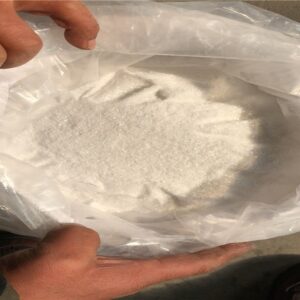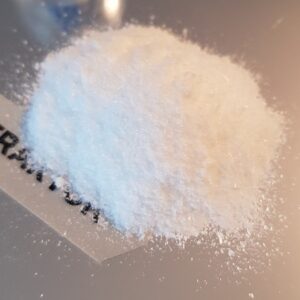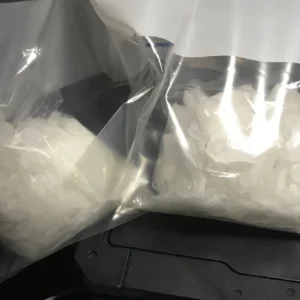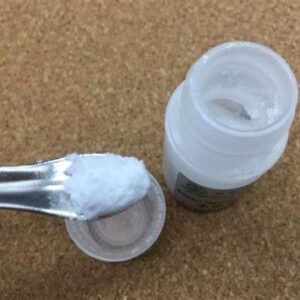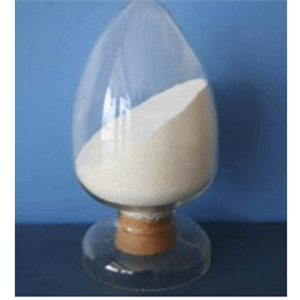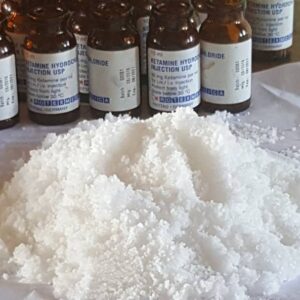Angiotensin II Acetate: Properties, Research Applications, and Legal Access
Introduction
Angiotensin II Acetate is a synthetic peptide widely used in cardiovascular research, pharmacology, and physiological studies. As the active component of the renin-angiotensin system (RAS), Angiotensin II plays a pivotal role in blood pressure regulation, electrolyte balance, and vascular function.
Angiotensin II Acetate Powder is primarily utilized in laboratory research, drug development, and receptor pharmacology studies, making it essential for academic, pharmaceutical, and regulatory research.
This article provides a detailed overview of chemical properties, mechanisms of action, research applications, quality standards, and safe legal procurement, ensuring full compliance with international regulations.
Informational: Chemical Identity and Properties
| Parameter | Specification |
|---|---|
| Chemical Name | Angiotensin II Acetate |
| Synonyms | Ang II Acetate; Asp–Arg–Val–Tyr–Ile–His–Pro–Phe Acetate |
| CAS Number | 4474-91-3 |
| Molecular Formula | C50H71N13O12·CH3COOH |
| Molecular Weight | 1046.23 g/mol (acetate salt) |
| Peptide Sequence | Asp–Arg–Val–Tyr–Ile–His–Pro–Phe |
| Appearance | White to off-white lyophilized powder |
| Solubility | Soluble in water, PBS; slightly soluble in organic solvents |
| Purity | ≥ 98% (HPLC/LC-MS) |
| Storage Conditions | –20 °C, desiccated, light-protected |
| Documentation | Certificate of Analysis (COA), Safety Data Sheet (SDS) |
Overview: Angiotensin II Acetate is a bioactive peptide used in pharmacological studies of the renin-angiotensin system, blood pressure modulation, and receptor-binding assays.
Navigational: Biological Function and Mechanism
Angiotensin II is a key component of the renin-angiotensin-aldosterone system (RAAS):
- Vasoconstriction: Stimulates smooth muscle contraction in blood vessels, increasing blood pressure.
- Aldosterone Release: Promotes sodium and water retention via adrenal gland signaling.
- Sympathetic Activation: Enhances noradrenaline release, affecting heart rate and vascular tone.
- Pathophysiological Role: Involved in hypertension, heart failure, kidney disease, and vascular remodeling.
Research with Angiotensin II Acetate is critical for developing antihypertensive drugs, ACE inhibitors, and angiotensin receptor blockers (ARBs).
Navigational: Research Applications
1. Cardiovascular Research
- Models hypertension and heart failure in animal studies.
- Evaluates vasoconstriction and cardiac remodeling pathways.
- Supports drug efficacy testing for RAAS modulators.
2. Renal and Endocrine Studies
- Investigates renal blood flow, sodium balance, and aldosterone release.
- Used in in vitro kidney cell assays to study angiotensin receptor signaling.
3. Pharmacological and Drug Development Research
- Used as a reference peptide for angiotensin receptor agonists or antagonists.
- Supports receptor-binding studies, high-throughput screening, and pharmacokinetic analyses.
4. Analytical and Educational Applications
- Functions as a calibration standard in HPLC or LC-MS assays.
- Demonstrates peptide-mediated signaling and receptor pharmacology in teaching labs.
Commercial: Grades, Quality, and Supplier Selection Angiotensin II Acetate Powder near
1. Available Grades
| Grade | Purity | Application |
|---|---|---|
| Analytical / Research Grade | ≥ 98% | Receptor studies, in vitro assays, pharmacology research |
| Peptide Synthesis Grade | ≥ 95% | Custom peptide analog synthesis, method development |
| Bulk / Industrial Grade | 90–95% | Large-scale laboratory and R&D use |
2. Packaging and Handling
- Lyophilized in vials (1 mg – 50 mg).
- Stored in airtight, desiccated containers to maintain stability.
- Suppliers provide COA, SDS, and batch traceability documentation.
3. Quality Assurance
- Verified via HPLC, LC-MS, or peptide sequencing for identity and purity.
- Free from residual solvents or biological contaminants.
- ISO-certified or GMP-compliant suppliers ensure reliable and reproducible results.
Transactional: Legal Supply and Compliance Angiotensin II Acetate Powder online
Angiotensin II Acetate is a research-grade peptide legally sold for laboratory, pharmaceutical, and analytical applications. It is not approved for human consumption outside regulated clinical studies.
Regulatory Overview
| Region | Regulatory Authority | Requirements |
|---|---|---|
| United States | FDA / DEA | Legal for research use; must comply with peptide handling protocols |
| European Union | EMA / REACH | Research use permitted; documentation required |
| United Kingdom | MHRA | Legal for laboratory and pharmaceutical research |
| Asia-Pacific | Local authorities | Legal for research and industrial applications; COA and SDS required |
Safe Procurement Practices
- Purchase from certified suppliers with analytical or peptide-grade Angiotensin II Acetate.
- Verify COA and SDS for purity, batch integrity, and stability.
- Store in a cool, dry, desiccated environment, protected from light.
- Maintain documentation for institutional and regulatory compliance.
- Use PPE and proper lab protocols when handling bioactive peptides.
Safety and Handling
| Hazard | Precaution |
|---|---|
| Bioactive Peptide | Avoid ingestion, inhalation, or skin contact |
| PPE | Gloves, lab coat, protective eyewear required |
| Storage | –20 °C, desiccated, light-protected |
| Spills | Absorb, ventilate, and dispose according to local regulations |
| Emergency | Rinse affected area with water; seek medical attention if needed |
Market and Research Outlook
Angiotensin II Acetate Powder is critical in cardiovascular and renal research, with demand driven by:
- Growth in hypertension and heart failure research.
- Development of ACE inhibitors and ARBs.
- Expansion in peptide-based receptor pharmacology studies.
High-purity Angiotensin II Acetate from certified suppliers ensures reproducibility, safety, and regulatory compliance in research institutions worldwide.
Conclusion
Angiotensin II Acetate is a vital peptide for cardiovascular, renal, and pharmacological research. Its high purity, stability, and traceable documentation make it suitable for drug development, receptor studies, and analytical assays.
By sourcing from reputable, certified suppliers, researchers can ensure legal, safe, and effective use, making Angiotensin II Acetate an indispensable tool in modern biomedical research.
Angiotensin II Acetate Keywords
angiotensin II acetate powder • ang II peptide • renin-angiotensin system research • cardiovascular research peptide • analytical grade angiotensin II • high purity peptide standard • receptor binding studies angiotensin II • HPLC reference peptide • RAAS pharmacology • pharmaceutical research peptide
Purchase Angiotensin II Acetate in Bulk at Factory Prices
Buy wholesale Angiotensin II acetate CAS No. 68521-88-0 factory price: Acquire Angiotensin II acetate in bulk quantities at factory prices. Angiotensin II acetate, identified by CAS Number 68521-88-0, is a crucial pharmaceutical compound used primarily for the management of hypotension, particularly in cases arising from septic shock or other forms of distributive shock. This medication, a synthetic vasoconstrictor peptide, mirrors the structure of the naturally occurring human hormone angiotensin II and is marketed under the brand name Giapreza. The U.S. Food and Drug Administration (FDA) approved the use of angiotensin II in December 2017 for the treatment of low blood pressure resulting from septic shock.
Medical Applications of Angiotensin II Acetate
Angiotensin II acetate serves as a potent vasoconstrictor designed to elevate blood pressure in adults suffering from septic or other types of distributive shock. As a naturally occurring hormone within the renin-angiotensin system, angiotensin II exerts significant systemic vasoconstriction. The vasopressor properties of this hormone have been under investigation since its isolation in the late 1930s. Vasopressors are medications used to counteract vasodilatory shock by inducing peripheral vasoconstriction. While traditional vasopressors, such as catecholamines (e.g., dopamine, norepinephrine, epinephrine) and non-catecholamines (e.g., vasopressin), are commonly employed, they may not always be effective in reversing vasodilatory shock and can lead to notable side effects, including limb ischemia and cardiac arrhythmia. Angiotensin II is presented as an alternative treatment option, capable of increasing blood pressure and potentially reducing the required dosages of catecholamines.
Administration Guidelines for Angiotensin II Acetate
Angiotensin II acetate must be administered via an intravenous infusion, diluted in 0.9% sodium chloride before use. The recommended initial dosage is 20 nanograms (ng) per kilogram (kg) per minute, administered continuously through an intravenous infusion. It is advisable to use a central venous line for administration. Blood pressure response should be monitored closely, and the dosage of angiotensin II should be adjusted every 5 minutes in increments of up to 15 ng/kg/min as needed to reach or maintain the target blood pressure.
Potential Adverse Effects of Angiotensin II Acetate
Patients treated with angiotensin II acetate may face an increased risk of thromboembolic events. The ATHOS-3 study reported a higher incidence of arterial and venous thrombotic and thromboembolic events in patients treated with angiotensin II compared to those receiving a placebo (13% [21 out of 163 patients] vs. 5% [8 out of 158 patients]). It is recommended that patients receiving angiotensin II be on concurrent prophylaxis to prevent venous thromboembolism. Other possible adverse effects include thrombocytopenia, tachycardia, fungal infections, delirium, acidosis, hyperglycemia, and peripheral ischemia.
Chemical Name: Acetic acid; (3S)-3-amino-4-[[(2S)-1-[[(2S)-1-[[(2S)-1-[[(2S,3S)-1-[[(2S)-1-[(2S)-2-[[(1S)-1-carboxy-2-phenylethyl]carbamoyl]pyrrolidin-1-yl]-3-(1H-imidazol-5-yl)-1-oxopropan-2-yl]amino]-3-methyl-1-oxopentan-2-yl]amino]-3-(4-hydroxyphenyl)-1-oxopropan-2-yl]amino]-3-methyl-1-oxobutan-2-yl]amino]-5-(diaminomethylideneamino)-1-oxopentan-2-yl]amino]-4-oxobutanoic acid
SMILES Notation: CCC(C)C(C(=O)NC(CC1=CN=CN1)C(=O)N2CCCC2C(=O)NC(CC3=CC=CC=C3)C(=O)O)NC(=O)C(CC4=CC=C(C=C4)O)NC(=O)C(C(C)C)NC(=O)C(CCCN=C(N)N)NC(=O)C(CC(=O)O)N.CC(=O)O
Standard InChIKey: VBTZKFAHKJXHBA-PIONDTTLSA-N
Standard InChI: InChI=1S/C50H71N13O12.C2H4O2/c1-5-28(4)41(47(72)59-36(23-31-25-54-26-56-31)48(73)63-20-10-14-38(63)45(70)60-37(49(74)75)22-29-11-7-6-8-12-29)62-44(69)35(21-30-15-17-32(64)18-16-30)58-46(71)40(27(2)3)61-43(68)34(13-9-19-55-50(52)53)57-42(67)33(51)24-39(65)66;1-2(3)4/h6-8,11-12,15-18,25-28,33-38,40-41,64H,5,9-10,13-14,19-24,51H2,1-4H3,(H,54,56)(H,57,67)(H,58,71)(H,59,72)(H,60,70)(H,61,68)(H,62,69)(H,65,66)(H,74,75)(H4,52,53,55);1H3,(H,3,4)/t28-,33-,34-,35-,36-,37-,38-,40-,41-;/m0./s1
Storage and Handling Tips
To achieve higher solubility, warm the tube to 37°C and gently shake it in an ultrasonic bath. The stock solution should be stored below -20°C and can remain viable for several months. It is advisable to prepare and use the solution on the same day whenever possible. If preparation is necessary, ensure the stock solution is sealed and stored properly at below -20°C. Allow the vial to reach room temperature for at least an hour before opening it.
Packaging Considerations
- During transportation, the packaging of the product might result in high-purity compounds adhering to the vial’s neck or cap. Remove the vial from its packaging and shake it gently to ensure the compounds settle to the bottom.
- For liquid products, centrifuge at 500xg to collect the liquid at the bottom of the vial.
- Minimize loss and contamination during experimentation.
Where to Buy
- Lilcent Global Medical Pharmacy.

